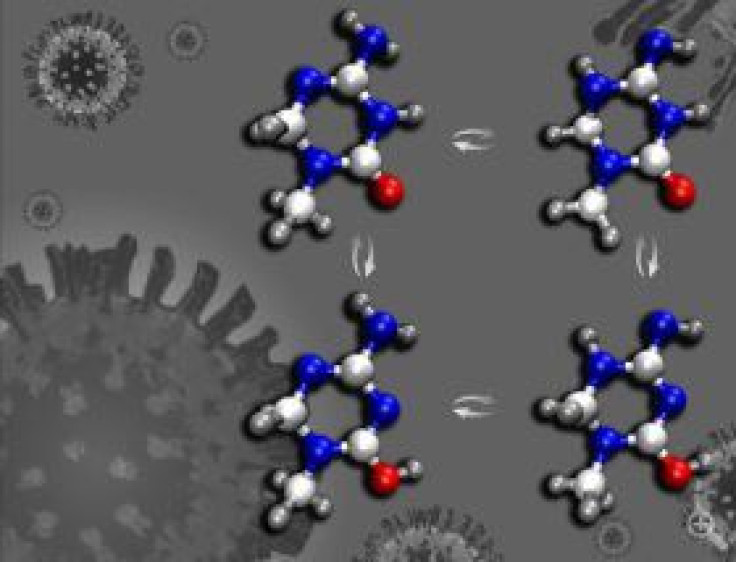Shapeshifting Molecule Makes Viruses Mutate Themselves To Death

Viruses mutate naturally as a way to avoid being killed off; the mutations usually make them stronger and more evasive to both the immune system and drugs.
But years ago, researchers at MIT and the University of Washington wanted to develop an HIV drug that could force the virus to mutate out of control. The notion was that the HIV virus would ultimately mutate itself to death. The researchers developed this anti-HIV drug/molecule, referred to as KP1212, and found that it could make HIV viruses double their mutation rates and no longer able to produce proteins. KP1212 is a shape-shifting molecule that also promotes tautomerism — a chemical situation that allows the migration of protons among the nitrogen and oxygen atoms on nucleic-acid bases.
Now, in a new study, the same researchers have discovered that a spectroscopy method will make it much easier to understand the phenomenon KP1212 induces, which they note is rather poorly understood. A spectroscopy involves analyzing the interaction between matter and electromagnetic radiation.
According to the study, the researchers found that 2D infrared spectroscopy was far more effective at differentiating between normal and shape-shifting structures than other experimental tools. They also measured how quickly the shape-shifting occurs — within 20 billionths of a second.
“Two-dimensional infrared spectroscopy will be critical on the path ahead,” John Essigmann, Professor of Chemistry, Toxicology, and Biological Engineering at MIT, said in the press release. “It lets us look at the structures that exist in aqueous solution, which is the natural milieu of cells.”
The researchers found that more than just two dominant tautomers existed within the molecule, and that it could also accept an extra proton, which made more rearrangements and tautomers structures possible. “The number of possibilities exploded,” Andrei Tokmakoff, the Henry G. Gale Distinguished Service Professor in Chemistry at UChicago, said in the press release.
As a result, the researchers are hopeful that the molecule will be eventually developed as an effective treatment for HIV. “KP1212 is about 20 percent of the way toward being an ideal therapeutic mutagen,” Essigmann said in the press release. “The hints given us by the spectroscopy guide us toward even better mutagenic molecules.”
Source: Peng C, Fedeles B, Singh V, Li D, Amariuta T, Essigmann J. “Two-dimensional IR spectroscopy of the anti-HIV agent KP1212 reveals protonated and neutral tautomeres that influence pH-dependent mutagenicity.” Proceedings of the National Academy of Sciences, 2015.



























